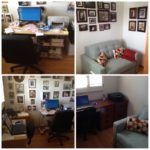Remodeling, redecorating, designing a space can feel overwhelming when given the list of options available. Choosing paint colors can confuse some while picking the right furniture can stump another. How best should a room’s furniture be laid out? What is the purpose of the room? What mood do you want to create? Do the elements work together or do they fight one another?
Interior Design encompasses a host of key components that many people aren’t aware of and don’t think about when considering making changes to their spaces, hence the need, in many cases, for an interior designer, who can help guide one in the process. Guidance and direction are key here. Depending on the scope of the project, whether it’s a full remodel of a kitchen, bath or other room, or redecorating a specific space, along with the intended budget, a designer can guide a client to the right resources and contractors to keep the project flowing smoothly. The designer can foresee some common pitfalls and help the client avoid them ahead of time. He can guide the client to avoid costly mistakes that people unknowledgeable can and do make. The designer will offer options at varying price points, as well as quality, to provide the client the best choices for her needs.
Interiors encompass the places we live and work and need to be both comfortable and functional as well as meet our aesthetic needs. The items placed within these areas need to fit both the scale of the room as well as how the space is going to be used–a functional craft area, a lounge area for reading and relaxing, a formal dining room or an office area that also serves as a guest bedroom. Placing an oversized sleigh bed in the office, if the room isn’t large, could impede on the flow and productivity for the office use, especially if the desk chair is bumping into the bed or a storage supply door is blocked. Is the lighting the right kind for this office? Is there task lighting and is it sufficient for the user’s needs? Is there enough storage for papers and do the colors of the room make the user sleepy and tired or energized and enticed to work?
Harmony, mood and function all need to be considered in a space. Do the pieces work or clash against one another? Is the mood creating the right “feel” for that space or is it jarring, alienating, or at odds with how the space is used? Does the room function for it’s intended purposes so the users both enjoy the space and work productively as well? A small room with oversized furniture and lackluster lighting will severely detract from a room’s effectiveness and usage. Bland, boring colors or dark and morose colors in a room that receives little natural light, will impact the mood of the space, causing it to feel depressing and uninviting. By painting lighter and brighter hues and adding a mirror that can reflect light into the room as well as create a sense of spaciousness, the room’s feel and mood changes considerably. Again, something a trained eye can help solve.
When approaching interior design changes, there are a host of available options from online sites to a variety of magazines and TV shows that can guide and direct one to helping clarify the way. If you should feel overwhelmed and need help, contact Creative Space Organizing at 510.501.1213 for help in your interior design planning and execution.

